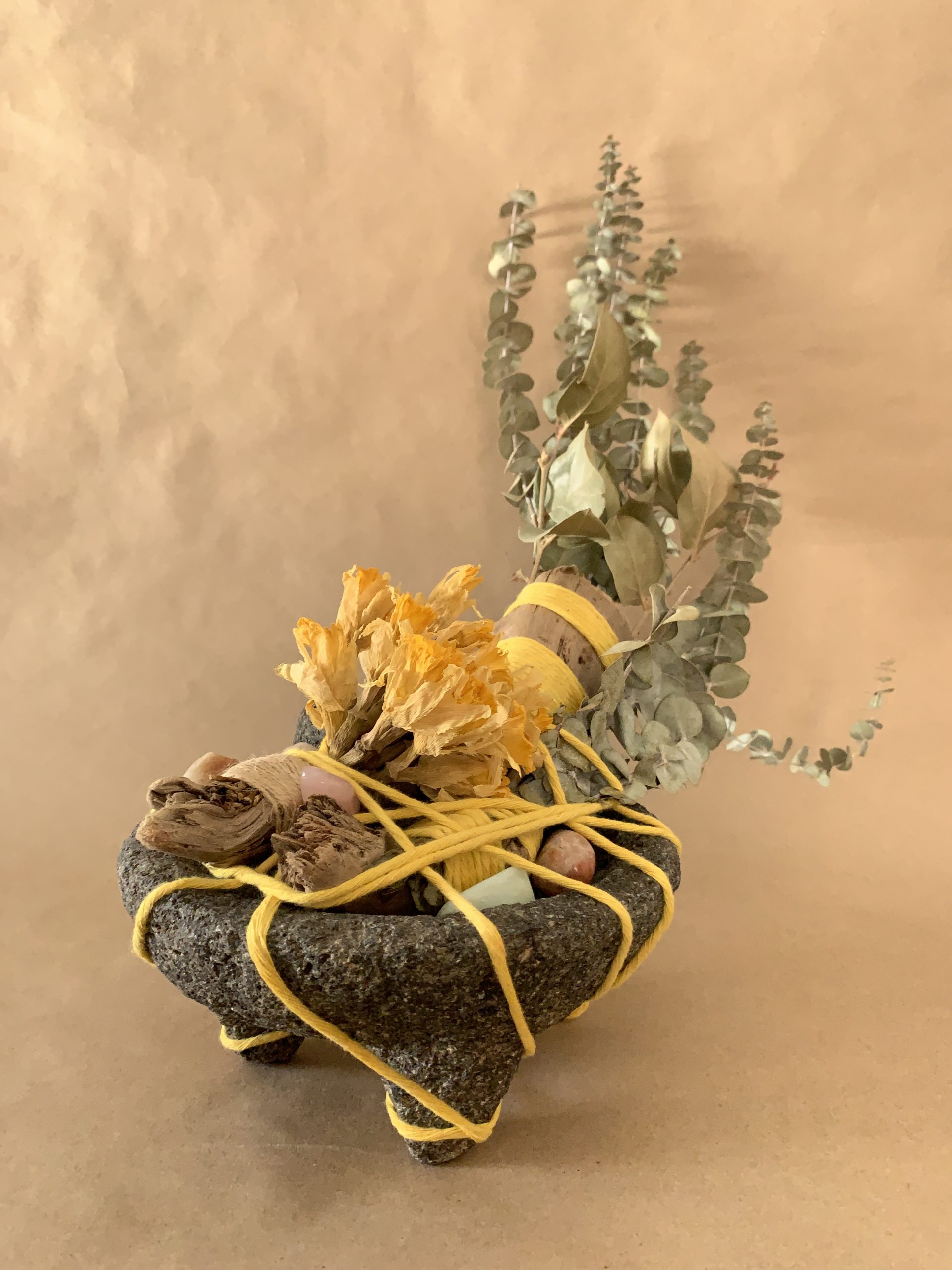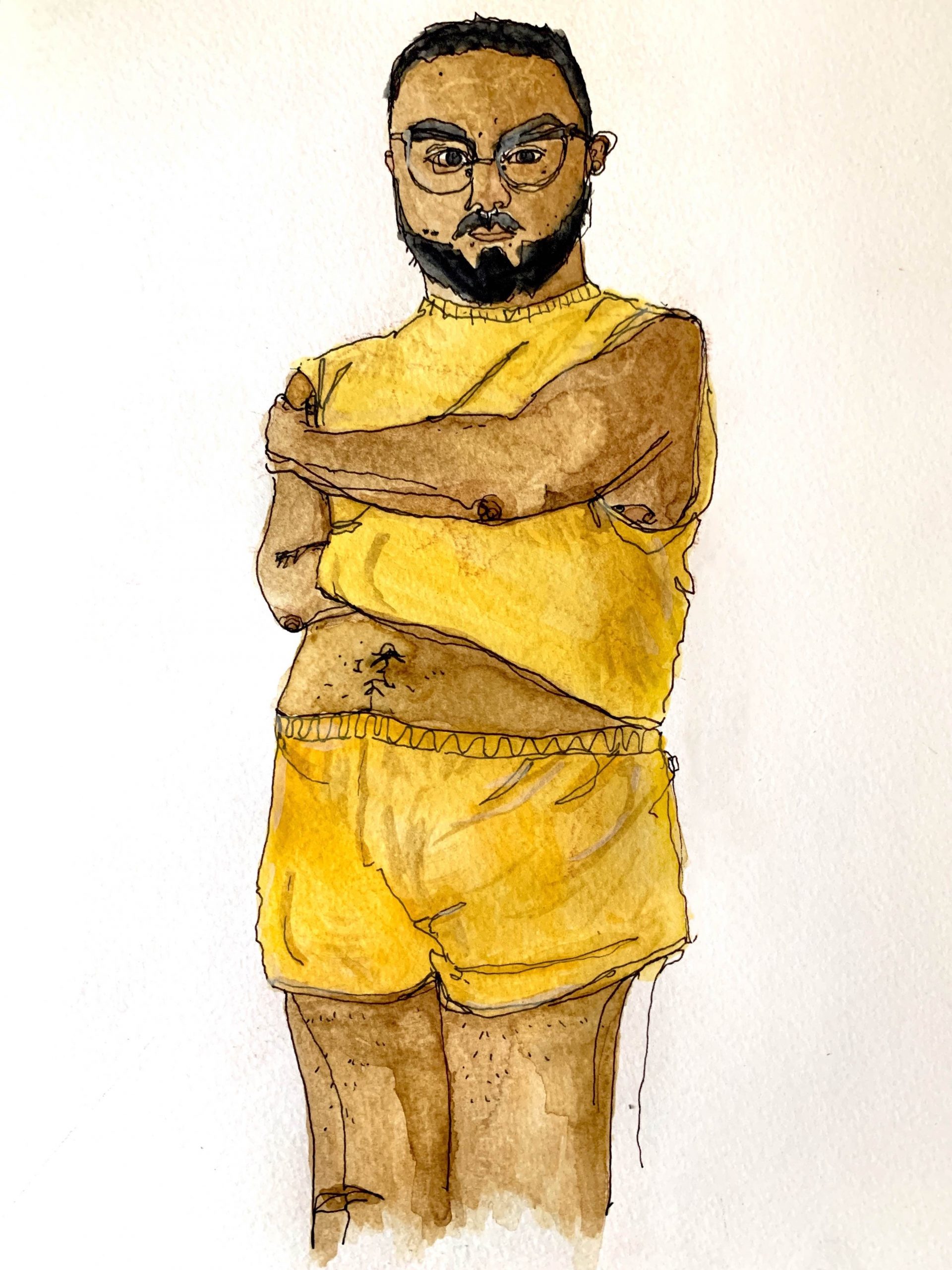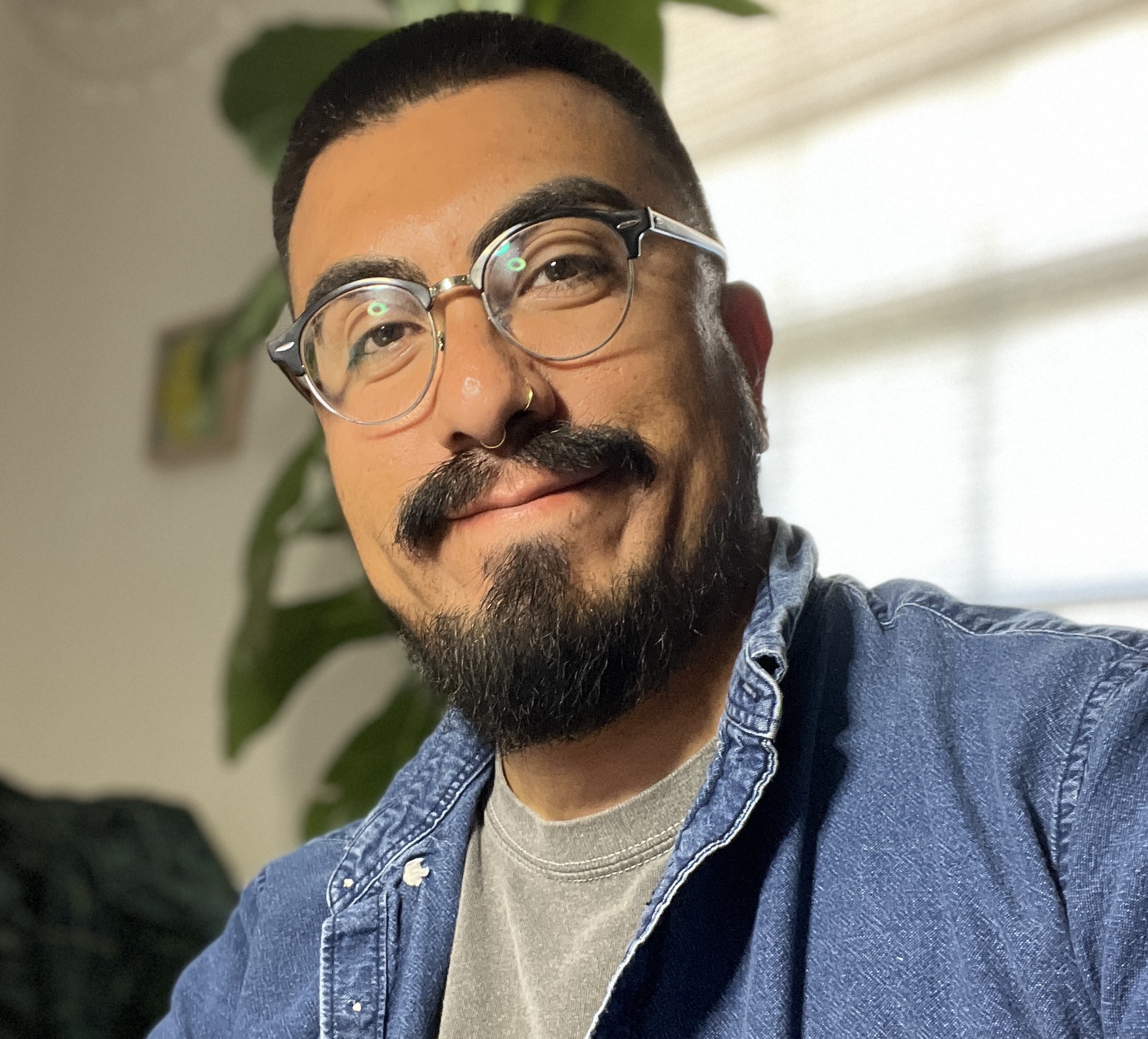Oct. 7, 2023
The American Art Therapy Association represents a diversity of professionals, students, and organizations across the nation. We recognize and celebrate the work of our members at all levels through our Featured Member series.
During National Hispanic Heritage Month (September 15 – October 15), we spotlight members of the Latinx community and ask them to share about their identity.
“As someone who engages in art I recognize the value of creating, of liberating yourself with whatever tool or idea you use to bring something to life. These experiences with art making led me to follow the path of art therapy. Creating allowed me to tap into an inner-world of hopes, dreams, pain, and grief to then transform them into something special: create an extension of myself that deserved to be witnessed and felt if not by others, then by me.” — Ivan Lopez
How does your Hispanic heritage intersect with your work as an art therapist?
My Mexican-American identity and knowledge of the Spanish language directly intersects with my work as an art therapist, particularly in creating meaningful connections with other Spanish-speaking individuals. There is a sense of familiarity when the person sitting across from you looks like you, understands your language, and lived experiences. Although there are nuances because of the diversity among Spanish speaking individuals, having these small “bridges” creates different ways to access stored knowledge which in turn becomes stories of resilience and empowerment.
How have you used art to honor your culture or heritage?
Art has allowed me to honor and more importantly, reconnect with my Mexican culture, which was a relationship that I feel was interrupted due to my family’s decision to immigrate. Through creative exploration, I’ve discovered that engaging in repetitive hand-processes such as weaving and ceramics, I feel the most connected. Art has become a bridge where the “in-between” process of making feels familiar, grounding, and most natural. I’d like to believe that feeling exists because it has been passed down from my ancestors and is inherently a part of me. My art and creativity is the direct result of those that have come before me, that feeling is powerful.
What have your experiences been providing art therapy services to Spanish-speaking populations?
Providing services to Spanish-speaking populations has challenged me to reflect on my internalized “-isms” and biases and how that may show up in the therapeutic work. What I’ve come to understand is that the Spanish language has been the meeting place for establishing connection, however, I am constantly learning that individuals navigate their lives based on their cultural and mixed identities. They’re each uniquely different and precious; I am humbled to acknowledge that there is a lot I don’t know but can learn in order to provide a meaningful healing experience.

“Déjame Crecer, Let Me Grow” 2020
Mortar and pestle, botanicals, string, driftwood, crystals
Ivan Lopez is a mixed media artist working primarily with textiles, found objects, collage, and watercolors. Ivan’s work varies between craft and personal, exploring themes such as identity, beauty, self-love, and self-preservation.
What excites (or inspires) you most about your job right now?
Currently, I work for a non-profit and focus on providing youth, who have been impacted by violence and trauma, with prevention and intervention counseling services. I’m a new art therapist and I’m finding that trauma work is challenging, but what inspires me about working with trauma is the courage, strength, and resiliency I see in my clients when they decide to share their story. I’m continuously excited to be someone who helps hold and guide them through the process of healing and understanding. Through this process is where I hope to continue using art to facilitate that healing. When I’ve used art in therapy, I get to witness self-discovery and self-compassion. There are truly no words for that feeling other than hope that whatever is happening in the space, is offering healing.
Has working with a particular client group shaped your professional focus or specialty? What have you learned from working with these clients?
Although I’ve had the opportunity to work with various client groups, I think I’m still learning what I’d like my professional focus to be. I often find myself feeling the most connected working with queer folks and youth and I think this feels the most natural to me based on my experience of having to navigate my queer identity in my adolescence into adulthood. I work mostly with young women and non-binary folks who’ve experienced violence and trauma and I am learning that there is no cookie-cutter approach when helping them process their stories. Every young person I have interacted with is in a different place in their healing and often I am finding myself “preparing the soil” and providing a therapeutic relationship that can prepare them for the work later on in their lives if they choose to continue with therapy.
How have race, diversity, and/or social justice impacted your work as an art therapist?
Social justice has always been present and impacted my work as an art therapist. I think part of this is due to my own experiences with injustice and interacting with different systems of oppression. I feel that if I’ve experienced this, then others have too, and I should do my part in bringing this awareness into my work with clients. Most of my clients are young, identify as queer, are mixed race or Black and/or Latino, so it is even more important for me to bring these identities into the room and shed light on how these identities shape how we interact with the world and vice versa. Usually, when I bring in culture and systems of oppression into the therapeutic space, it helps strengthen the relationship with my client because they feel that other experiences are also being recognized and valued. I do my best to include various aspects of their identity and ask questions to understand their world rather than make an assumption, this also encourages them to challenge me and speak up when their boundaries have been disregarded.
What are your hopes for the future of the art therapy profession?
The world of art therapy is still very new and what I am most excited about is how it will continue to evolve as new art therapists enter the field. I think a lot of new art therapists are bringing new ideas, perspectives, challenging the profession, and redefining the practice because of things like cultural humility, social justice, and equity. I am excited to see what spaces we occupy to build more community and presence. I am really hopeful that art therapy can be recognized as a standard model of therapy because too often the “art” component is devalued, undermined, underfunded, or completely left out as an option.
Is there something you would like to share about your journey thus far as an art therapist?
As someone who engages in art I recognize the value of creating, of liberating yourself with whatever tool or idea you use to bring something to life. These experiences with art making led me to follow the path of art therapy. Creating allowed me to tap into an inner-world of hopes, dreams, pain, and grief to then transform them into something special: create an extension of myself that deserved to be witnessed and felt if not by others, then by me. I wondered if facilitating this experience for others would do the same because I learned that sometimes it’s not the outcome or product but the process of making where the self-discovery takes place. I often saw others create and tell stories about their process or finished product and I thought how wonderful to witness someone’s inner world, their story, to see their joy and pain simultaneously.

As a new art therapist, my journey with art in therapy has been what I hoped for and more. It’s been a tool I use with clients that has allowed them to see themselves outside of themselves, be curious, explore, ask questions, and learn from their experiences. The hope has been that engaging in art making can help give them the language to express what they feel, or when words aren’t enough, a space to release. It has been a magical journey to review the art made in session and to spend time with each as an artifact or time in our work together to see how far they’ve come.
What advice would you give someone interested in pursuing a career in art therapy?
If you’re considering a career in art therapy, my advice would be to develop a relationship with art AND therapy. Put yourself in the shoes of your client, give yourself the experience of what it’s like to sit with a blank sheet of paper, or materials you’d never thought of using, or allow yourself to move your body in ways that feel safe to you. Guide yourself through these experiences if you will ask your clients to do the same, having an understanding of what comes up for you will help guide them by making accommodations, exploring thoughts and feelings, and allowing for surprises to happen.
What keeps you excited about the AATA community?
Being an AATA member has allowed me to be a part of a community that has deeply moved me. I first attended the AATA conference in 2022 as a recent Loyola Marymount University graduate and with the intention of presenting research with a team of colleagues. I was not prepared for the amount of support I received from my mentors and from the people I connected with. This was an opportunity not only to show up, listen, and learn, but also to engage, question, and challenge. My experience involved a lot of reflection and emotions and I believe all of this was possible because of the amazing interactions I had with other art therapists who willingly shared their journey and experience in the field. I felt seen, validated, and was reminded to uplift others. My on-going excitement has been sustained because I see the value of continuing to show up, of being part of the amazing dialogues that take place, and because you don’t truly stop being a student; I find myself constantly learning new ways to take what I’ve learned and apply it to my work.
What are your hopes for the future of the art therapy profession?
I have always believed that if humanity were able to express itself through art of any form we would live in a better world. Art gives the opportunity to self-reconcile and then delve into the process of self-reflection, which can create a profound, even radical, personal transformation. I hope that the art therapy profession can help us to strive for this on a greater scale.
About Ivan Lopez
Associate Marriage & Family Therapist and Art Therapist

Ivan is a graduate from Loyola Marymount University’s dual art therapy and marriage and family therapy program and was recognized as the 2022 Helen B. Landgarten Scholar. He received his BA in Studio Art from California State University, Long Beach and focused on graphic design and textile art. Ivan is a creative who has worked in various settings providing art-based experiences and workshops to all ages.
Currently, he provides prevention and intervention mental health services to youth who have been impacted by violence and trauma and uses art therapy in addition to talk therapy. Ivan is working towards completing his clinical hours for licensure and hopes to continue to engage in opportunities for growth and collaboration in the field. He also continues to engage in his art practice and build his body of work.
Connect with Ivan on Instagram @andifelteverything and @ivanlopeztextiles.
